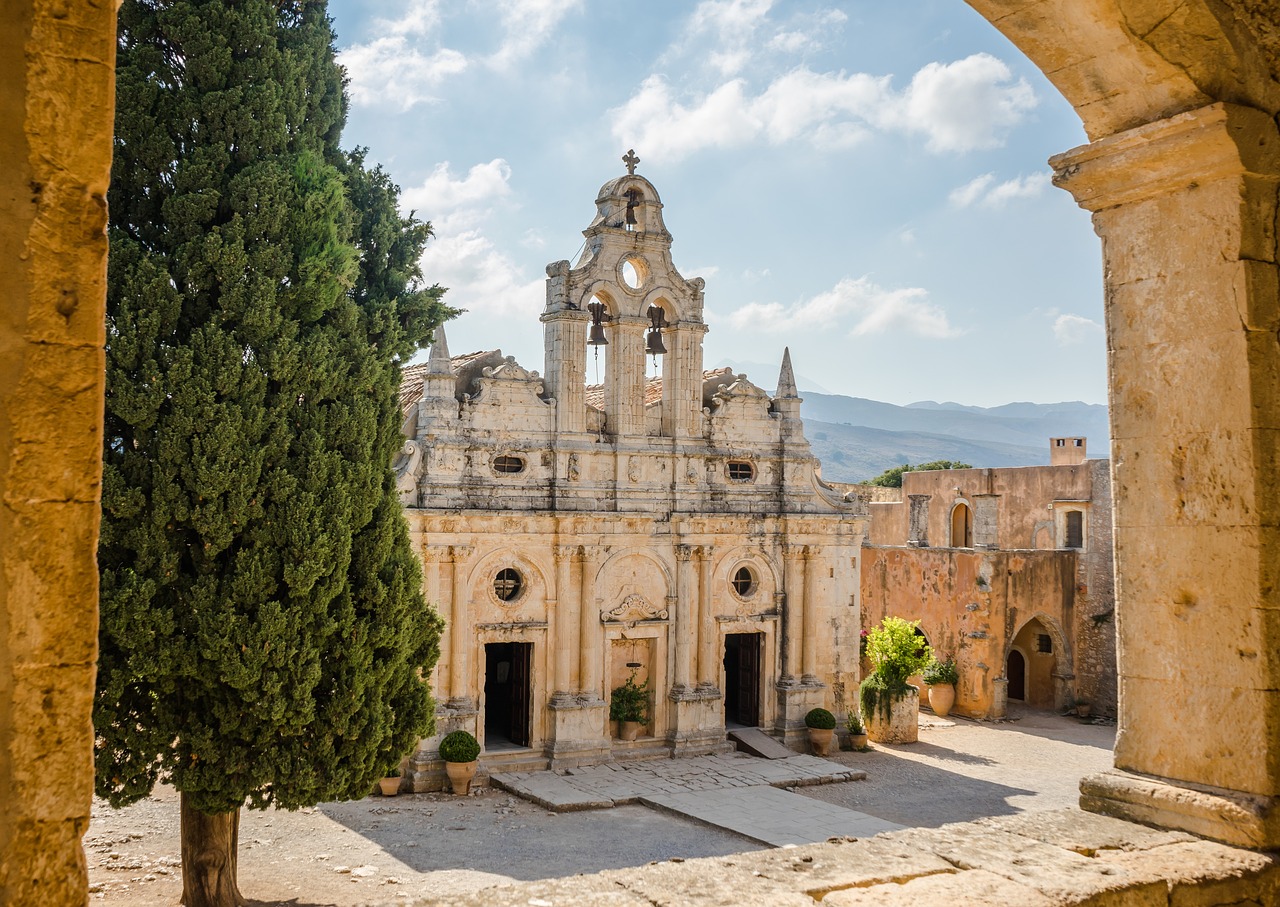Eastern Orthodox pilgrimage is a deeply spiritual practice that has been an integral part of the faith for centuries. It is not just a physical journey to a sacred destination but a transformative experience that impacts the soul. Pilgrims in the Eastern Orthodox tradition travel to sacred sites to strengthen their faith, seek healing, and deepen their connection with God. These sacred sites, ranging from ancient monasteries to holy shrines, hold historical, theological, and spiritual significance. This article will explore the Eastern Orthodox pilgrimage, the sacred sites that are visited, and the profound spiritual impact of this practice on believers.
The Spiritual Significance of Pilgrimage in Eastern Orthodox Christianity
Pilgrimage in Eastern Orthodoxy is seen as a journey of repentance, prayer, and spiritual renewal. For Orthodox Christians, the act of pilgrimage is an opportunity to experience a deeper connection to God through the intercession of saints, the veneration of relics, and the opportunity to meditate on holy places. The purpose of pilgrimage is not merely to visit historical sites, but to spiritually align oneself with God’s grace.
In the Eastern Orthodox Church, pilgrimage is also an act of humility. Pilgrims often travel long distances, sometimes facing hardship, to visit sacred locations. This journey symbolizes a metaphorical pilgrimage of the soul, which strives to move closer to God and away from the distractions of worldly life. The physical aspect of the journey is intimately connected with the spiritual process, making pilgrimage a holistic experience.
Rituals and Practices During an Orthodox Pilgrimage
Eastern Orthodox pilgrimage is rich with rituals and practices that help pilgrims grow in faith. Some of these practices include:
1. Prayer and Meditation:
One of the central aspects of Eastern Orthodox pilgrimage is prayer. Pilgrims engage in frequent prayers, such as the Jesus Prayer (“Lord Jesus Christ, Son of God, have mercy on me, a sinner”), which helps them focus on humility, repentance, and spiritual growth. Meditation on sacred icons and scripture is also an important part of the pilgrimage experience. Many pilgrims spend time reflecting on their life and the saints they encounter during their journey.
2. Venerating Relics and Icons:
A key ritual in Orthodox pilgrimage is the veneration of relics and icons. Relics are the physical remains of saints or objects associated with them, and are considered holy by Eastern Orthodox believers. Pilgrims often kiss or bow before relics as a sign of reverence and to seek the saint’s intercession. Icons, religious images of Christ, the Virgin Mary, and saints, are also central to Orthodox devotion. Pilgrims engage in prayer before these icons, seeking spiritual insight and strength.
3. Participation in Divine Services:
Orthodox pilgrims often take part in the Divine Liturgy, the central act of worship in the Eastern Orthodox Church. This service includes the Eucharist (Holy Communion) and other prayers. Pilgrims may participate in liturgies held at monasteries, churches, and other sacred sites, offering a sense of communal worship and spiritual unity with other Orthodox Christians.
4. Fasting and Penance:
In preparation for or during pilgrimage, many Orthodox Christians engage in fasting and acts of penance. Fasting is a significant spiritual discipline in Eastern Orthodoxy and is seen as a means of purifying the soul. Pilgrims may refrain from certain foods, including meat and dairy, and may also give up certain luxuries to focus more on prayer and repentance during their journey.
5. Light Candles for Prayer:
Another common ritual during pilgrimage is the lighting of candles. Pilgrims light candles in churches and monasteries as an offering of prayer. Each candle represents a prayer or a petition made to God, and it is believed that the act of lighting a candle symbolizes bringing one’s request before God in the presence of the saints.
Famous Eastern Orthodox Pilgrimage Sites
Eastern Orthodox Christians have numerous sacred sites around the world that attract pilgrims seeking to deepen their faith. These locations are often associated with miracles, saints, and significant events in Christian history. Some of the most notable pilgrimage sites include:
1. Mount Athos, Greece:
Mount Athos, known as the “Holy Mountain,” is perhaps the most famous pilgrimage site in Eastern Orthodoxy. Located in northern Greece, Mount Athos is home to a unique monastic community of over 20 monasteries, which are dedicated to prayer and spiritual growth. Only men are allowed to visit Mount Athos, and it remains one of the most sacred places in Eastern Orthodoxy. Pilgrims travel to Mount Athos to visit its monasteries, pray at the tombs of saints, and venerate relics.
2. The Monastery of Saint Catherine, Sinai, Egypt:
Located at the foot of Mount Sinai, the Monastery of Saint Catherine is one of the oldest continuously inhabited monasteries in the world. It is believed to house the relics of Saint Catherine of Alexandria and is home to a significant collection of religious icons and manuscripts. Pilgrims visit this monastery to pray, reflect, and explore the spiritual history of the early Christian world.
3. The Holy Land (Israel and Palestine):
The Holy Land holds deep significance for all Christians, including the Eastern Orthodox Church. Sites such as Jerusalem, Bethlehem, and Nazareth are deeply intertwined with the life of Jesus Christ. Pilgrims visit locations like the Church of the Holy Sepulchre in Jerusalem, where Christ’s tomb is believed to be, and the Church of the Nativity in Bethlehem, the birthplace of Jesus. Pilgrims walk the paths of Christ’s journey, gaining a deeper understanding of his life and ministry.
4. The Monastery of Vatopedi, Mount Athos, Greece:
Another revered site on Mount Athos, the Vatopedi Monastery is one of the largest and most influential monasteries on the Holy Mountain. It is home to a rich collection of relics and icons and is a popular pilgrimage destination. Pilgrims come to Vatopedi to seek guidance, spiritual healing, and intercession from the monks.
5. The Shrine of the Theotokos (Mother of God) in Tinos, Greece:
The island of Tinos in Greece is famous for the Church of the Panagia Evangelistria, which houses an icon of the Virgin Mary believed to have miraculous powers. Pilgrims travel to Tinos, especially during the feast of the Assumption in August, to seek healing, miracles, and to honor the Theotokos.
The Spiritual Impact of Pilgrimage
The spiritual impact of pilgrimage on Eastern Orthodox Christians is profound. Pilgrims often return from their journeys with a renewed sense of purpose, having experienced a deeper connection with God and a greater understanding of the saints and their role in the Orthodox faith. Pilgrimage offers a transformative experience that renews the spirit, fosters humility, and leads to a closer walk with God.
The act of visiting sacred sites brings believers closer to the historical and spiritual roots of their faith. It also provides an opportunity for reflection and repentance, as pilgrims often seek forgiveness and healing from sin. The pilgrimage experience is one of humility, prayer, and devotion, which strengthens one’s commitment to living a Christ-centered life.
Conclusion
Eastern Orthodox pilgrimage is a sacred journey that is deeply embedded in the faith and spirituality of Orthodox Christians. By visiting sacred sites, venerating relics, and engaging in prayer and rituals, pilgrims experience a profound spiritual transformation. Whether it’s the quiet reflection on Mount Athos or the communal worship in the Holy Land, pilgrimage remains an essential aspect of Eastern Orthodox Christianity, providing believers with a path to spiritual growth, healing, and a deeper connection to God.




